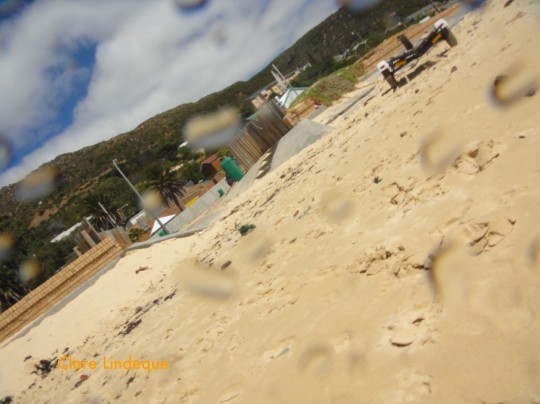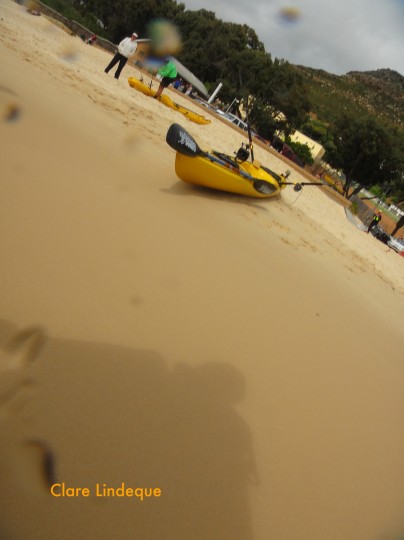The vast majority of new divers in Cape Town know where Long Beach in Simon’s Town is. Irrespective of the dive school you choose for Open Water training it is in most cases quite likely you will do at least one dive at Long Beach. There is a very good reason for this: it is diveable in most conditions as is usually the last place on the coastline to be blown out. It is a safe environment and a perfect place for training as it is by far one of the easiest shore entries around.

Although it is known to all dive trainers as a training site, very few visitors know this and not all water users (boaters, kayakers and paddle-skiers) are aware of your presence in the water. The average boater does not know the tell-tale signs of bubbles divers make, and why should he? But being struck by a paddle-ski, a propeller, or the keel of a sailboat is going to hurt you and it could easily kill you.
It is not too often that boats buzz by the beach, but on occasion the Navy boats as well as paddlers, and fishermen drive by as well as visitors to the coast with their recreational boats. Even the NSRI uses this beach for training of their boat crews on occasion. Part of a skipper’s training is to be aware of things floating on the surface: buoys could indicate nets, for example, that would snag the propeller, and thus boaters are trained to avoid or approach carefully any such flotation device.

So why do most divers dive without any form of warning to a boat that they are there, and why would they do so when part of what they are teaching new divers involves ascending in random spots all over the area? “We seldom ascend during a dive” is most often the answer as to why yet there are several surface skills, training ascents and the constant risk of an unplanned ascent by a new diver coming to terms with buoyancy (or in some cases having a mild panic attack and dashing to the surface).
The simple answer is that it is not required by law in South Africa to tow a buoy or alpha flag… But then it’s not law that as an Open Water diver you can’t go to 50 metres during a dive. You are taught not to exceed your training level, your logic will also most likely tell you it’s a risky plan, but if you are foolish enough to try who would stop you?

It is fortunate that the dive industry is largely self-regulated and as divers we are free to explore the ocean at will. Scuba diving is a very safe sport and provided you stay within the guidelines of you training agency you will have thousands of safe and enjoyable dives. When doing a boat dive, the skipper will typically erect an Alpha flag to indicate to other boats that he has divers in the water (if your skipper doesn’t do this, it’s time to switch dive charters to one that’s more safety conscious).
You could dive without a pressure gauge – but that would be foolish – you could dive without a mask, but then you would see very little, and you could also dive without an alpha flag, but none of the surface water users would see you or know you were there. Would that not be foolish?















